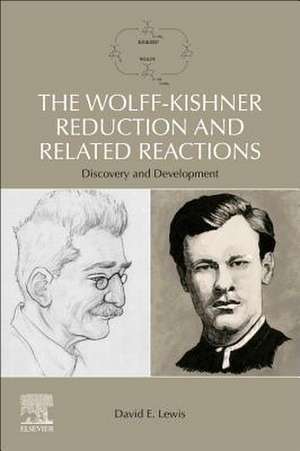The Wolff-Kishner Reduction and Related Reactions: Discovery and Development
Autor David E. Lewisen Limba Engleză Paperback – 18 iul 2019
- Introduces Wolff and Kishner, the discoverers of the reaction, along with Huang Ming-Long, the developer of an important modification of the reaction
- Discusses the discovery of the reaction and the way that priority for the discovery was settled between Wolff and Kishner
- Discusses, in depth, the development and usage of the reaction over the century, from its discovery, to its most recent applications and modifications in synthesis
- Includes biographical materials on the chemists responsible for major derivative name reactions based on the Wolff-Kishner reduction
Preț: 667.58 lei
Preț vechi: 875.88 lei
-24% Nou
Puncte Express: 1001
Preț estimativ în valută:
127.74€ • 139.19$ • 107.64£
127.74€ • 139.19$ • 107.64£
Carte tipărită la comandă
Livrare economică 16-30 aprilie
Preluare comenzi: 021 569.72.76
Specificații
ISBN-13: 9780128157275
ISBN-10: 0128157275
Pagini: 241
Dimensiuni: 152 x 229 x 20 mm
Greutate: 0.33 kg
Editura: ELSEVIER SCIENCE
ISBN-10: 0128157275
Pagini: 241
Dimensiuni: 152 x 229 x 20 mm
Greutate: 0.33 kg
Editura: ELSEVIER SCIENCE
Public țintă
Researchers in synthetic organic chemistry in both industry and academiaCuprins
1. The Discoverers of the Reaction2. Discovery and Priority3. The First Two Decades: Mechanism and Early Use in Synthesis4. To the End of World War II: Expanding the Use of the Reaction5. After World War II6. The Modern Wolff-Kishner Reduction7. Use of the Reaction in Modern Synthesis
